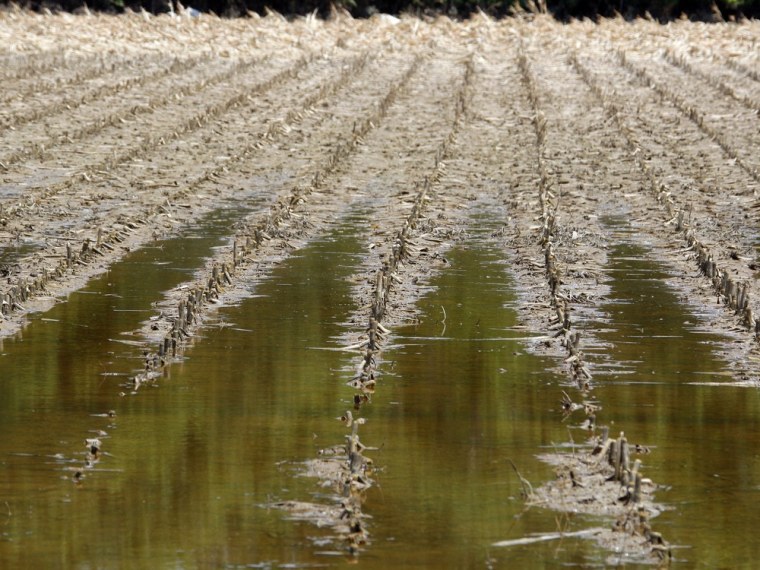U.S. food prices are expected to stay high through 2012 because a wet spring will likely cut the size of this fall's corn harvest.
And cotton has woes of its own, but for the opposite reason: a drought in Texas.
The government said on Thursday that The United States will have a surplus of just 695 million bushels of corn next year, less than the 900 million estimated last month.
The Agriculture Department said rain delayed planting schedules and will likely diminish crops by harvest time in September. This followed a more optimistic forecast in May, which predicted a drop in corn exports that could have replenished U.S. food supplies and eased prices.
More expensive grain has led to food price increases this year. Manufacturers and grocery stores have passed higher costs on to consumers. For all of 2011, the USDA predicts food prices will rise 3 percent to 4 percent.
USDA also forecast a hefty increase in corn use by China, up 8 million tonnes, or 5 percent, this year and up 13 million tonnes, or 8 percent, in 2011/12. China will draw down its stocks rather than import corn, USDA said.
China and the United States are the largest corn growers.
Traders said corn futures prices would rise by 10-20 cents a bushel because of the forecast of tighter supplies.
"USDA must feel comfortable we are going to lose acres, based on satellite (imagery)," said Jack Scoville, analyst for The Price Group. "We know we're going to lose the acres; it just depends how much. They didn't put them in beans."
The corn stocks to use ratio, a measure of supply, would be 5.4 percent this marketing year and drop to 5.2 percent for 2011/12. Both are close to the 5 percent ratio of 1995/96 and represent razor-thin supplies.
"Planting delays through early June in the eastern Corn Belt and northern Plains are expected to reduce planted area, more than offsetting likely gains in the western Corn Belt and central Plains where planting was ahead of normal by mid-May," said USDA.
It projected corn plantings of 90.7 million acres, down 1.6 percent from farmers' intentions, and harvest area of 83.2 million acres, down 2.2 percent.
USDA estimated the winter wheat crop at 1.45 billion bushels, up 2 percent from May. Traders expected a 2 percent drop. "Improved weather conditions during the past month in the upper Great Plains resulted in higher forecasted yields," said USDA.
Reeling from the worst drought in a century, cotton farmers in Texas are on the brink of writing off their withered plants this year and collecting the insurance.
"We cannot make this crop with no relief from hot temperatures and the wind," said Gary Evitt, a cotton farmer for over 40 years working on 2,000 acres of irrigated cotton outside Lubbock, Texas, in the heart of the Lone Star State's cotton area. "This is the worst (drought) I have seen."
The drought plaguing Texas, the biggest cotton growing state in the U.S., pushed up cotton futures this spring. Futures are hovering near $1.30 a lb, four times what they were in 2010 when cotton was the best performing commodity.
Carl Anderson, an influential economist with Texas A&M University, said farmers like Evitt may decide to just let their crop die so they can collect the insurance payments.
"They're very close to throwing in the towel on this season," he said. "It's looking very bleak."
Any word that farmers will tear out their plants and collect insurance money -- rather than ride out the drought -- could spark a fresh rally in a cotton market that saw a rally to historic highs in 2010.
That may put further strain on profits at clothes companies like Levi Strauss & Co and Guess Inc.
Some of these firms are already looking for alternatives to cotton, with Naturally Advanced Technologies Inc forging deals to sell its organic fiber to uniform maker Cintas and HanesBrands Inc.
